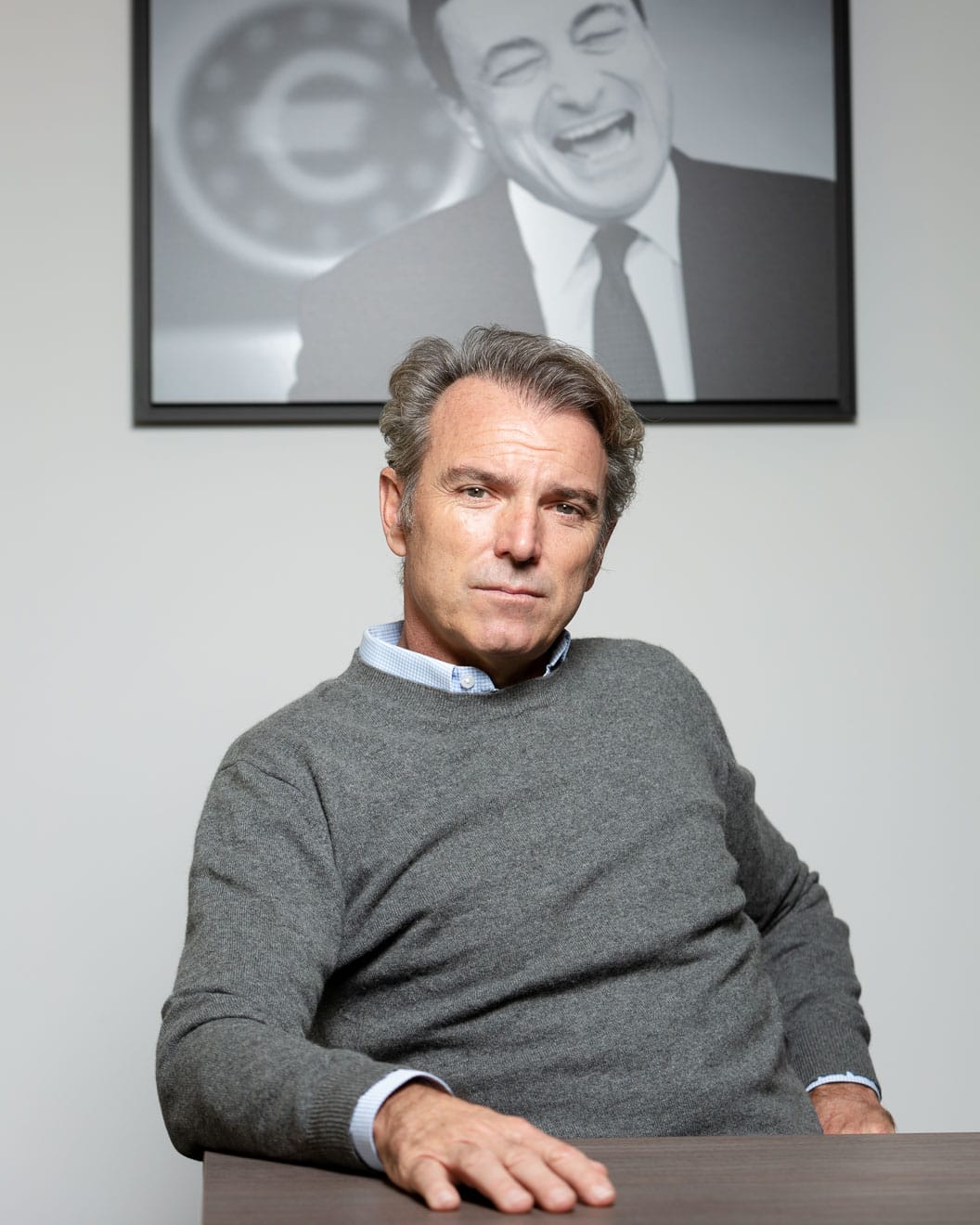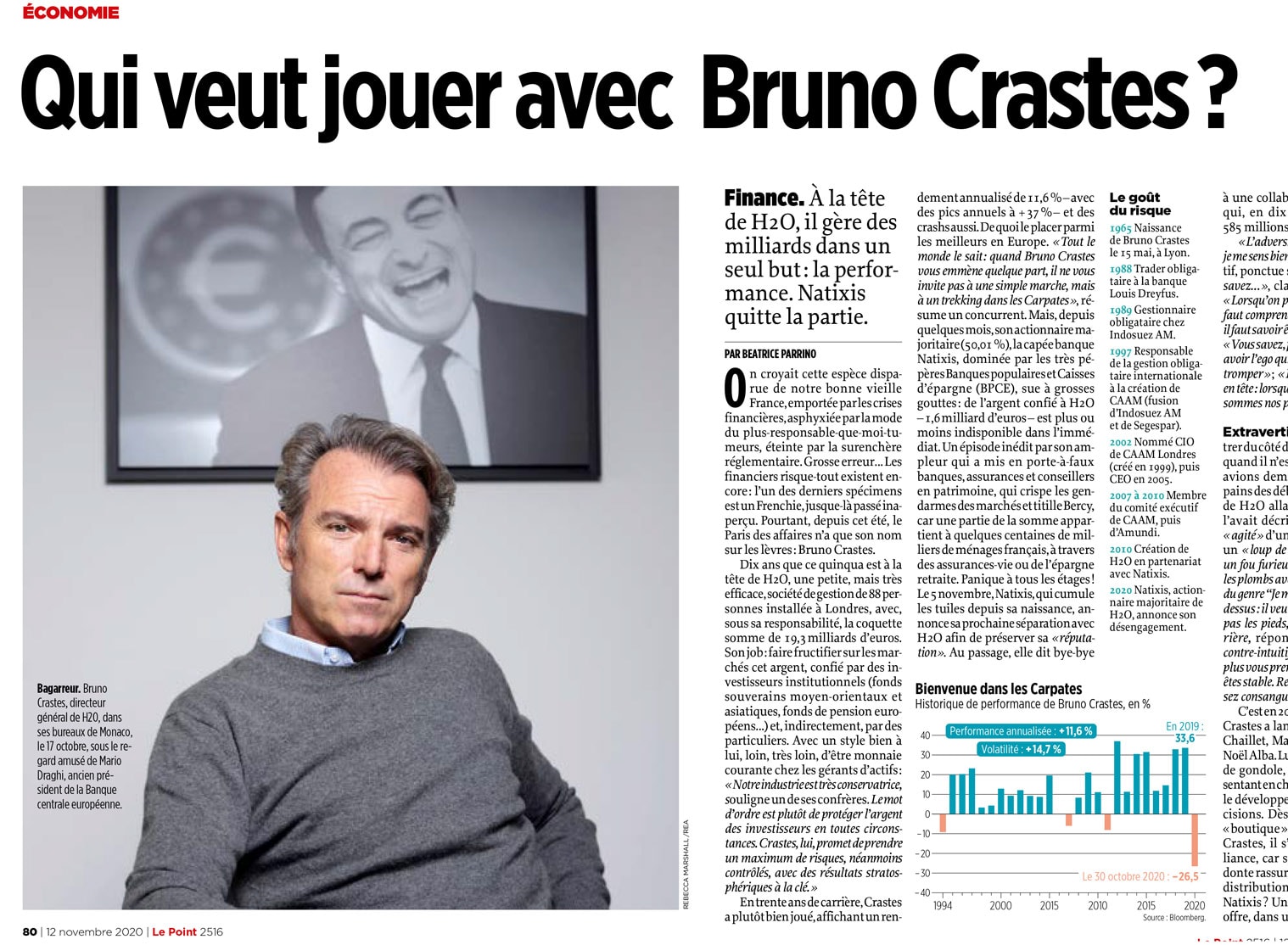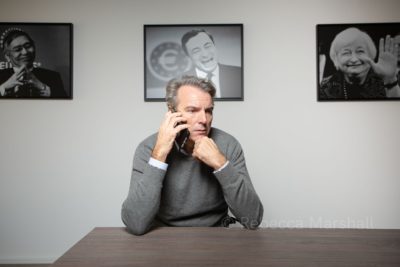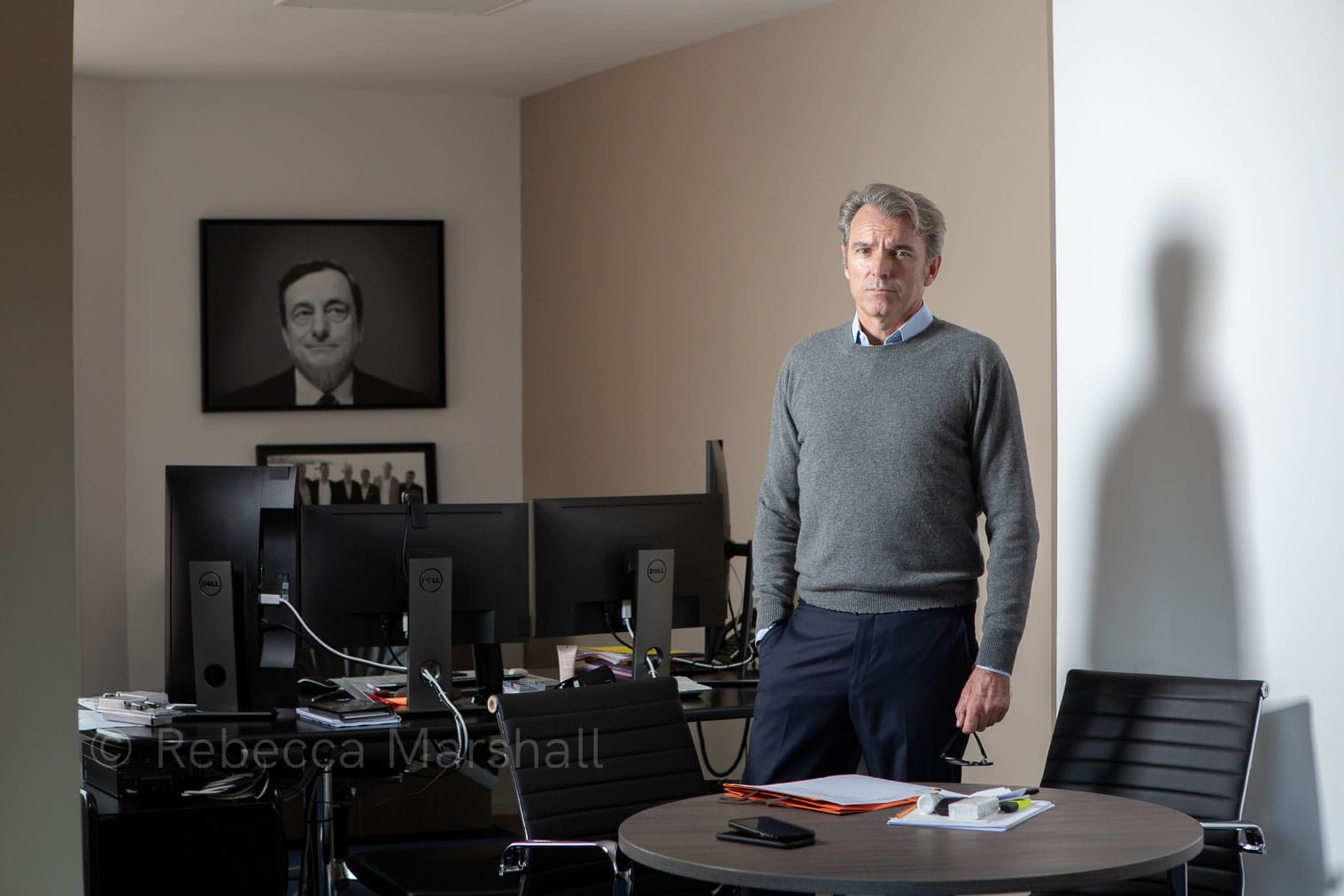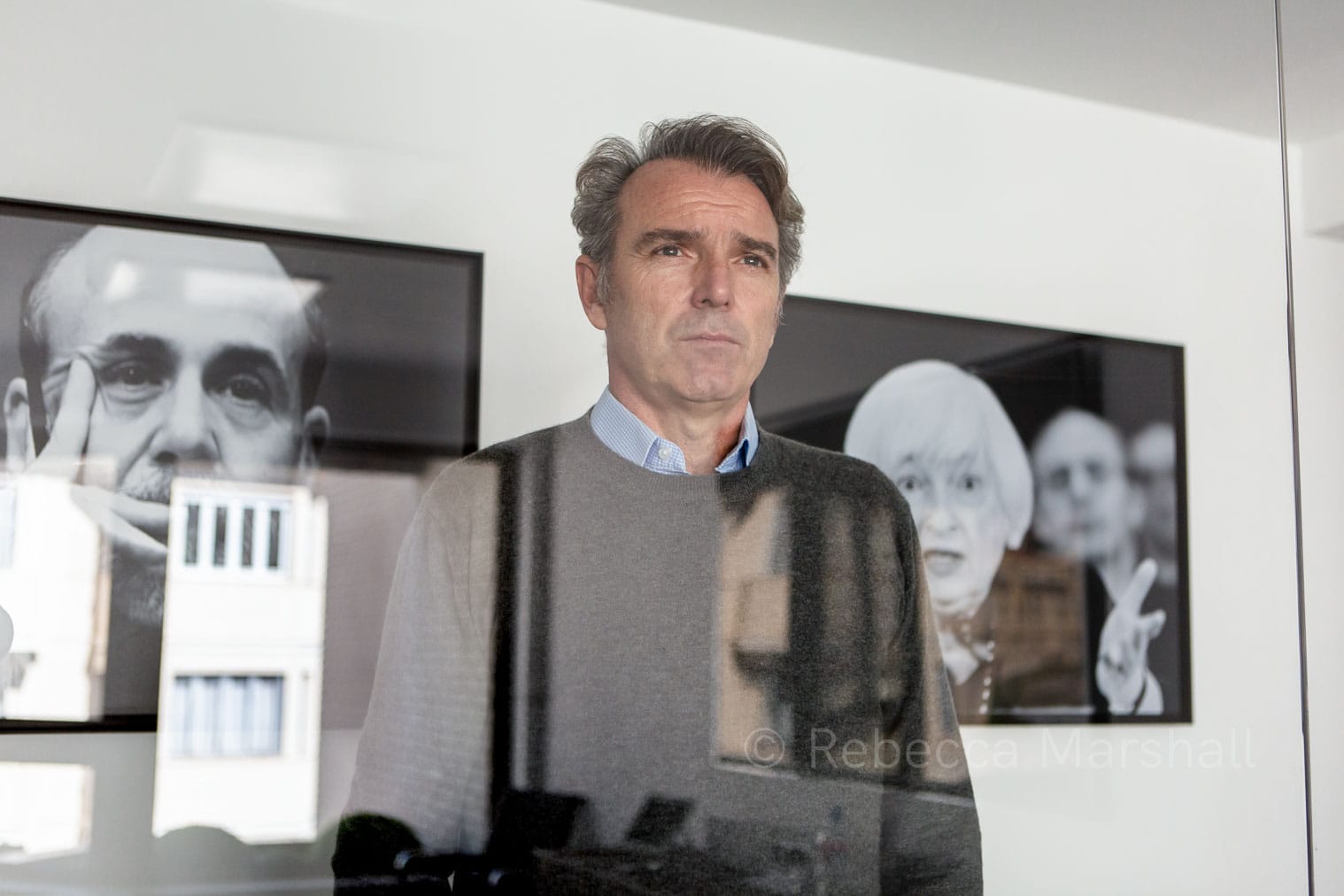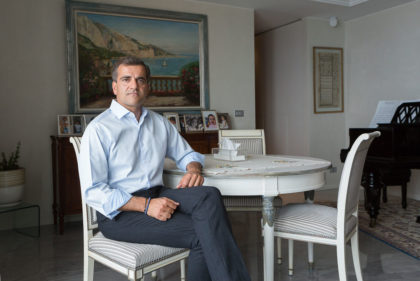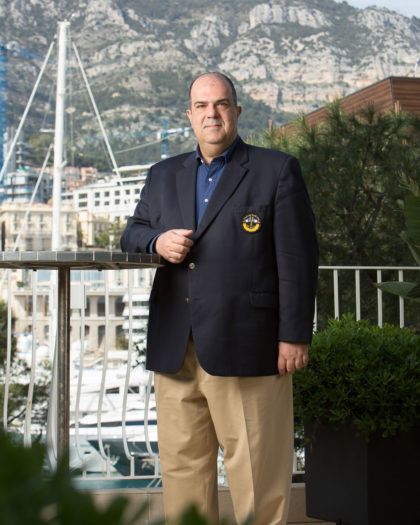French magazine Le Point assigned me as photographer to make a portrait of the CEO of H2O Asset Management last month. You may not have heard of Bruno Crastes, but in the shadowy corridors of high finance, his reputation precedes him. It’s been said that Bruno is ‘one of the best of his kind‘ and his high-risk hedge fund firm has boasted exceptionally high results for investors for many years. However, since this summer, the name Bruno Crastes has been on everyone’s lips in France’s finance world – and not for the right reasons.
The H2O affair
Even my French stepmother (not a notable figure on the banking scene) visibly bristled when I told her that I had photographed ‘the man behind the H2O affair‘. It’s easy for members of the public to think that regulations introduced in the last few years have made banking ‘safe’, and that high-risk traders have become more or less extinct. However, the press exposure of H2O’s operations, and its impact on the markets, have made it clear that this is not the case.
As a photographer, I won’t pretend to understand the world of hedge funds. What I have gleaned though, is that Bruno, “the best global bond manager of the past five years” (CityWire, 2015), and his company messed up. Dubious investment choices, public exposure of the details, a resultant ‘$7 billion hit‘ and a sudden lack of availability of money meant that H2O’s biggest customer (who owned half its shares, before cutting loose to ‘preserve their reputation‘), became, as a result, Europe’s worst-performing bank. So, down at the bottom of the pyramid, certain individuals’ pension funds and household savings accounts were affected. I don’t need to understand terms like illiquid, regulators, ratings suspension and toxic debt to get a general picture.
A little anxiety
Béatrice, the magazine’s writer, and I talked at some length before I went to Monaco to make Bruno’s portrait (she had already spoken to him by video conference). Le Point was the only publication to which Bruno had accorded an interview, and apparently, he had seemed quite emotional at moments, as well as volunteering the kind of personal thoughts that would give a PR agent a heart attack. Fortunately for him, conscientious Béatrice spared him those details in the article she wrote, and she thought I should know that, despite his good looks and not inconsiderable charm, he was a little anxious about the photographer’s visit. I wasn’t surprised: it is not the first time I’ve made a portrait of a business big shot in the media spotlight who is apprehensive about how their image will be portrayed by the press (see my portrait for the New York Times about a Monaco man wanted by the fraud squad).
A normal office; normal people
My photographer briefing from the art director was rather different. He mentioned the Wolf of Wall Street, and enthused about the idea of showing Bruno surrounded by trading screens and employees in his grand office, or placing him in front of a sumptuous view from his terrace over Monte Carlo (which is, I have to say, a fairly unoriginal idea for portrait commissions in Monaco).
Neither was going to happen. Offices in Monaco are, contrary to expectations, rarely grand. The price of space per m2 in the principality is prohibitive, even for those for whom a billion is not an abstract concept, and so many tower blocks are built on Monaco’s 2 km2 of land that only a minority of windows have a sea view, let alone a glimpse of the Monte Carlo Casino. As Bruno’s apparent second-in-command told me, slightly defensively, when showing me round, “It’s a normal office, we’re normal people“. Indeed, I saw the small team at work behind regular screens in a modest, low-ceilinged room and stuck my head into another office, which appeared to be home only to piles of boxes and bicycles.
In any case, when Bruno showed up, he stated that he didn’t want his photo taken near trading screens. He didn’t want people to see him as a finance man. There wasn’t much to say to that.
Toy dog and a tennis star
Bruno’s own office was fairly small and bland, with few personal effects other than a couple of copies of ‘When the Wolves Bite‘ (a book about a company, 2 billionaires and an epic Wall Street battle) on the coffee table. We chatted briefly, and, while I may not have witnessed Bruno’s emotional side, once we got onto the topic of his dog (a Dwarf Butterfly Toy Spaniel; about as far from a wolf as you could get), his eyes softened. After some head-scratching to remember passwords, he fired up his computer and several trading screens on his desk in order to show me photos of the puppy (there were many), and put the powerful processors to the task of googling the correct translation of its breed in English.
He may gush over pictures of his pet, but Crastes is no softie. As I was setting up the lighting, I was privy to him berating an unfortunate on the other end of the phone with surprising volume and force. Then, in the blink of an eye, he was all charm on another line… all the while running his eyes over screens and banging away on the keyboard. A visitor to his office tentatively stuck his head round the door. The newcomer mouthed a hello to me and cleared his throat, waiting for Bruno to acknowledge him. It turned out that this unassuming man was none other than Fabrice Santoro, a retired French pro top 20 tennis player. “Excuse me Bruno, have you got a minute?” Bruno nodded and fired off an email, before popping out into the corridor for a brief guffaw and a backslap.
The poor will suffer
Bruno is relatively new to Monaco. He lived in London for 20 years, and it was a pleasure to chat in my mother tongue. He shared his views on Brexit, which he believes to be a big mistake, and one that will lead to national impoverishment. “Unlike the French, the Brits know how to suffer. And I do believe the Brits will one day be great again. But they will be poor“. He clarified this slightly contradictory assertion with “Of course it will be the the poor, the majority, who will suffer: the very rich will be fine, as they can always move themselves & their money elsewhere“. He should know.
Bruno was patient throughout the portrait process (unlike a certain Monaco billionaire I remember, who had an aversion to photographers) and granted me 3 set-ups. He reminded me of someone, and when I asked, he told me he has often been likened to Christopher Reeve (famed for his portrayal of Superman). I had to agree, no flattery required.
In the portrait chosen by the magazine, I’m not sure how Bruno will feel about the former president of the Central European Bank, Mario Draghi, apparently laughing down at him from the wall behind. However, whether his apprehension about being photographed was assuaged in that moment or not, Bruno’s confidence is visible to all. Maybe Superman will have the last laugh after all.
